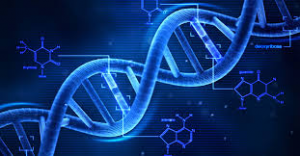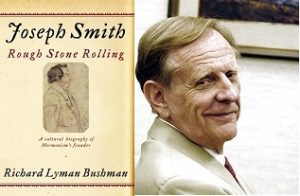In the news
Joseph Smith DNA Revealed: New Clues from the Prophet’s Genes
Written by Carrie A. MooreCreated: 21 December 2019
Edited transcript from a lecture by Ugo Perego given on August 6, 2008 at the Annual FAIR Conference in Sandy, UT: New Clues from Joseph Smith’s Genes
Written by Carrie A. Moore
By Carrie A. Moore
Deseret Morning News

Published: Saturday, May 28, 2005 10:44 p.m. MDT
KILLINGTON, VT. — While LDS Church founder Joseph Smith has been scrutinized intensely by both scholars and scoffers since he launched the faith in 1830, several new avenues of research are focused on his family relationships and whether he fathered children by his polygamist wives.
 A researcher examining DNA evidence of potential Smith descendants by wives other than his first wife, Emma Smith, told participants at the 40th annual Mormon History Association conference on Saturday he has ruled out three people suspected of being Smith’s children. Ugo Perego, who is working on an independent project funded by the Salt Lake City-based
A researcher examining DNA evidence of potential Smith descendants by wives other than his first wife, Emma Smith, told participants at the 40th annual Mormon History Association conference on Saturday he has ruled out three people suspected of being Smith’s children. Ugo Perego, who is working on an independent project funded by the Salt Lake City-based
Sorenson Molecular Genealogy Foundation, said he has compiled an initial list of nine such potential Smith descendants but has been able to locate DNA evidence on only four of them — three of them males determined not to be related.
A fourth, Josephine Rosetta Lyon (daughter of Sylvia Sessions Lyon), is still under investigation after five years of scrutiny, he said. But Y chromosome evidence, used to determine paternal relationships from father to son, is not present for Lyon because she is female. The effort to determine Lyon’s parentage has cost more than $100,000 to date. “This is not a complete list of possible descendants. I’m still working on that,” he said. Known descendants from the children of Joseph and Emma Smith number about 2,000, he said, many of them with little or no interest in religion and some with an aversion to their famous ancestor’s polygamist practices.
Video presentation: https://youtu.be/sYwgMPFYnLQ
Perego said he will be speaking to known descendants of Joseph Smith during a family reunion later this summer and hopes to be able to gather more DNA through a simple cheek swab to expand his database and to help determine Lyon’s parentage. He has DNA from her mother’s side of the family but is looking for evidence from Smith’s side.
Hair samples from Joseph Smith owned by the LDS Church are poor evidence because there is “very little (DNA) in hair, and it disintegrates over time.”
Since his work has become known via the grapevine, he often gets calls from people who believe themselves to be descended from Smith and one of his plural wives. “I did not go out looking for these people. They came to me,” he said.
Perego stressed the project is not being undertaken by the Sorenson Foundation itself but through a grant from it. Founded by billionaire medical devices pioneer James Sorenson, the nonprofit foundation announced several months ago it was compiling a database of DNA  based
based
evidence that would be accessible to family history researchers looking to verify their family tree.
Other aspects of Joseph Smith’s family life were also examined Saturday, including his relationship with his father, Joseph Smith Sr., and his preoccupation with binding families together both for time and eternity.
Richard Bushman, emeritus professor of history at Columbia University, said he was asked decades ago by former LDS Church historian Leonard Arrington to write a book detailing Smith’s personal struggles and the answers he came up with to resolve them.
After years of examining Smith, he said he has “an inkling of the inner Joseph Smith” on two issues he considered vital: fatherhood and the sealing of families together.
Bushman, who is currently chairman of the advisory committee of the Joseph Smith Papers project at Brigham Young University, will release a widely anticipated book, “Joseph Smith: Rough Stone Rolling,” this fall, published by Knopf.
He described the relationship between father and son as one of intense loyalty, despite the fact that Smith Sr. was a virtual failure in monetary terms, who lost the family farm in Vermont and a $1,000 inheritance in failed farming ventures. The older Smith assuaged his troubles with
alcohol, and while it didn’t dismantle his intimate relationships, his drinking caused grief within the family circle, Bushman said.
 Yet young Joseph was so loyal to his father that he refrained from joining the Presbyterian Church with his mother, Lucy Mack Smith. Their relationship has often been portrayed as the closer of the two parental ties, yet Bushman said young Joseph felt a special obligation to his father to heal family wounds.
Yet young Joseph was so loyal to his father that he refrained from joining the Presbyterian Church with his mother, Lucy Mack Smith. Their relationship has often been portrayed as the closer of the two parental ties, yet Bushman said young Joseph felt a special obligation to his father to heal family wounds.
Thus he conceded to use a “seer stone” to help his father dig for buried treasure, despite his own reticence about such a venture, Bushman said. Years later, after the young Smith had told family members of his experiences with heavenly visitors, his father acknowledged his son’s
divine “gifts should be used for a higher purpose.”
When Smith Sr. was baptized, his son was simply overcome with emotion more dramatic than family members had ever seen in him, he said. And when Smith ordained his father as patriarch of the fledgling LDS Church, he gave him a heavenly power above and beyond anything material the older Smith had failed to acquire and pass on to his sons, thus giving the family patriarch a way to bless his family similar to that of Old Testament prophets.
Death, loss and family separation troubled Smith greatly and were part of life on the American frontier. Toward the end of his life, the man many considered a prophet was consumed with concern about keeping his family intact, and his quest for answers resulted in Section 132 of the faith’s Doctrine and Covenants. In what he said was a revelation from God, Smith was “thrilled to discover that he could seal human relationships after death.”
He planned and ordered construction of a family tomb in Nauvoo where all of his family members could be buried together, anticipating a future resurrection of all of them present in one place.
“He had a passion for family,” Bushman said, quoting one author who said Smith ” ‘did not lust for wives so much as for kin.’ He wanted them all around and bound to him forever. He couldn’t bear to be alone.”
Both in regard to his father and his family, Smith produced answers to vexing questions about not only their temporal well-being but about their eternal salvation as well, Bushman said.
“Priesthood sealings were a theological solution to a social problem of how to bind families together in a mobile society,” Bushman said. “Does it detract from the divinity of his revelations for it to resolve personal and social problems? “Surely, we want revelation to be relevant both here and now as well as in the hereafter.”
Other DNA articles:
- DNA Rules Out Joseph Smith has descendants from polygamist wives
- DNA Solves a Joseph Smith Mystery
- The Irish Mormon Prophet
- Resolving a 150-Year-Old paternity case in Mormon history using DTC autosomal DNA testing of distant relatives
- DNA shows Joseph Smith was Irish
- Joseph Smith Jr. now even more Irish
- Joseph Smith DNA Revealed: New Clues from the Prophet’s Genes
